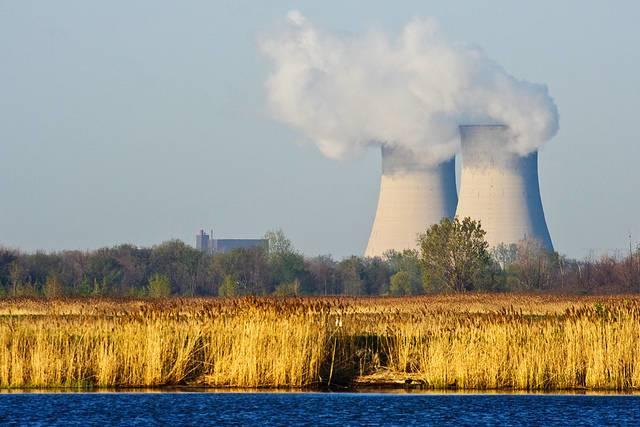
According to a recent report by GTM Research, solar power capacity not only continues to surge worldwide, but will rival the amount of nuclear power generated across the globe by the end of this year.
And by 2022, says GTM’s Stephen Lacey, the amount of solar capacity could increase 10-fold, which could see solar surpassing wind power in the global energy race while becoming more than double the size of current worldwide nuclear capacity.
GTM’s report said that projections for newly installed solar could fall short as much as 4 gigawatts (GW) of power this year, but that still has little impact on its overall growth. The anticipated 81 GW of solar power deployed by the end of 2017 will be more than double the amount launched in 2014, and 32 times more than what was installed a decade ago. Back in 2000, the total amount of solar power switched on worldwide stood at 150 megawatts. At its current rate of growth, in five years the world could have as much as 871 gigawatts of solar power in operation.
Meanwhile, the Nuclear Energy Institute has estimated that such power plants worldwide are providing the world 391.5 GW of power – and GTM has estimated that total amount will decrease slightly this year.
Of course, when it comes to the total of gigawatt-hours, or electrons, generated annually, nuclear still dwarfs solar, and will continue to do so for some time. Nuclear power currently supplies 11 percent of the world’s total power generation, with solar far behind at 1.8 percent.
“The generation gap is significant,” concluded Lacey, “But a crossover is approaching.”
Advocates of nuclear power point to the fact that it generates a clean source of fuel and overall has a remarkable safety record. Opponents of the technology are quick to counter with what they view as nuclear's huge problems: the resulting waste and where and how to store it. But another factor has emerged that has made nuclear increasingly irrelevant: its cost. Ongoing worries, several years after the 2011 Fukushima disaster, have forced nuclear plant operators to spend millions on safety upgrades, boosting the cost of what is already a pricey option for providing electricity to homes and businesses.
Meanwhile, the natural gas boom in the U.S. has offered utilities a cheap, reliable and relatively clean source of power. Furthermore, both solar and wind power continue to scale up while becoming cheaper and cheaper per megawatt hour. “Making nuclear power cheap was the Holy Grail,” said NPR’s Brian Mann, “[But] it never panned out.”
Despite the constant fits and starts, the solar industry continues to enjoy a steady and growing business, and the sector has been creating jobs at a rapid place from California to New York. Worldwide, the clean energy sector employs approximately 10 million people, an increase of over 2 million from only two years ago.
Here in the U.S., analysts forecast that renewables will dominate the country’s energy portfolio, no matter what policies the Trump Administration passes over the next few years. And the International Energy Agency (IEA) has suggested that solar could become the world’s largest source of power by 2050.
Image credit: James Marvin Phelps/Flickr

Leon Kaye has written for 3p since 2010 and become executive editor in 2018. His previous work includes writing for the Guardian as well as other online and print publications. In addition, he's worked in sales executive roles within technology and financial research companies, as well as for a public relations firm, for which he consulted with one of the globe’s leading sustainability initiatives. Currently living in Central California, he’s traveled to 70-plus countries and has lived and worked in South Korea, the United Arab Emirates and Uruguay.
Leon’s an alum of Fresno State, the University of Maryland, Baltimore County and the University of Southern California's Marshall Business School. He enjoys traveling abroad as well as exploring California’s Central Coast and the Sierra Nevadas.














